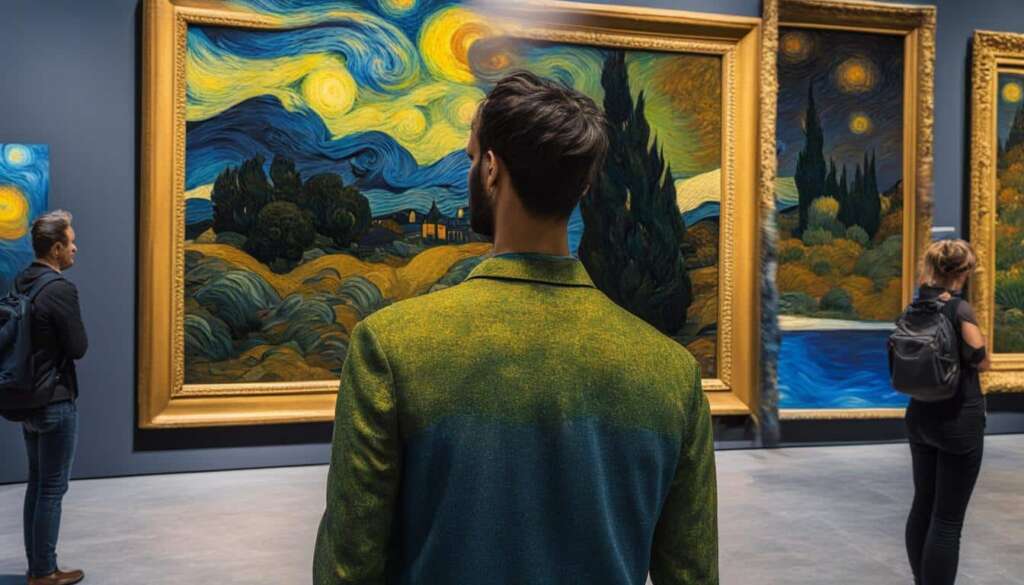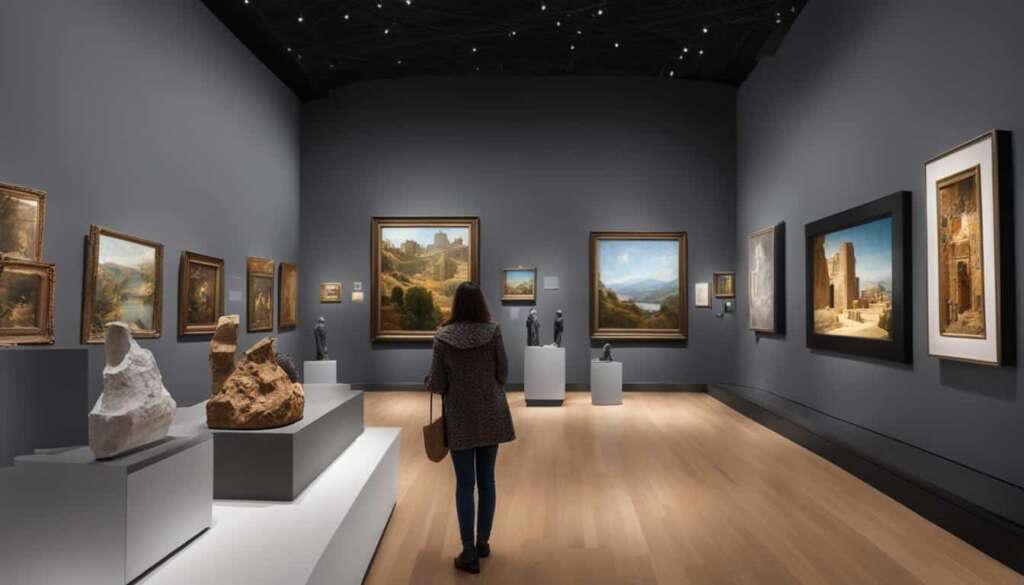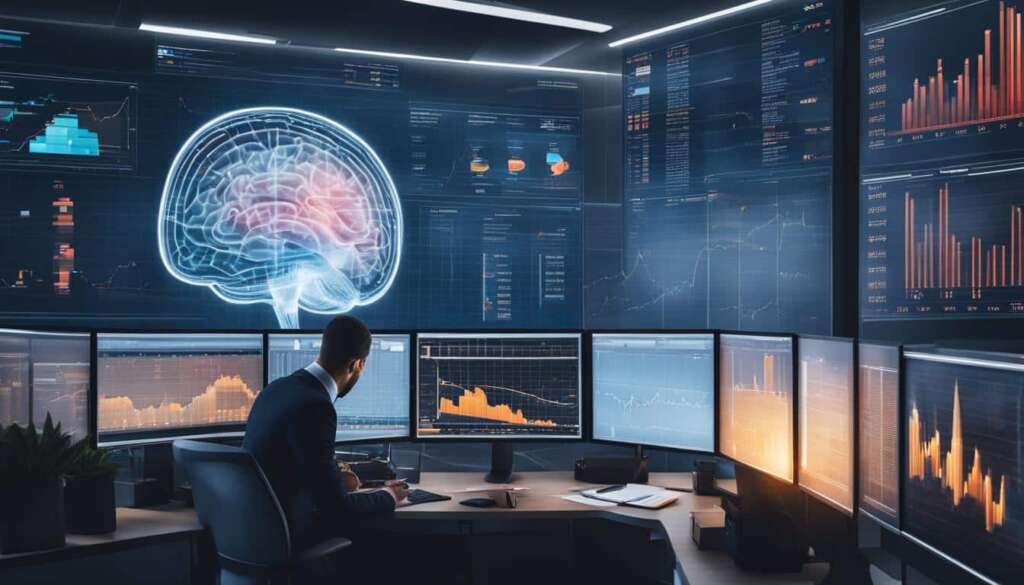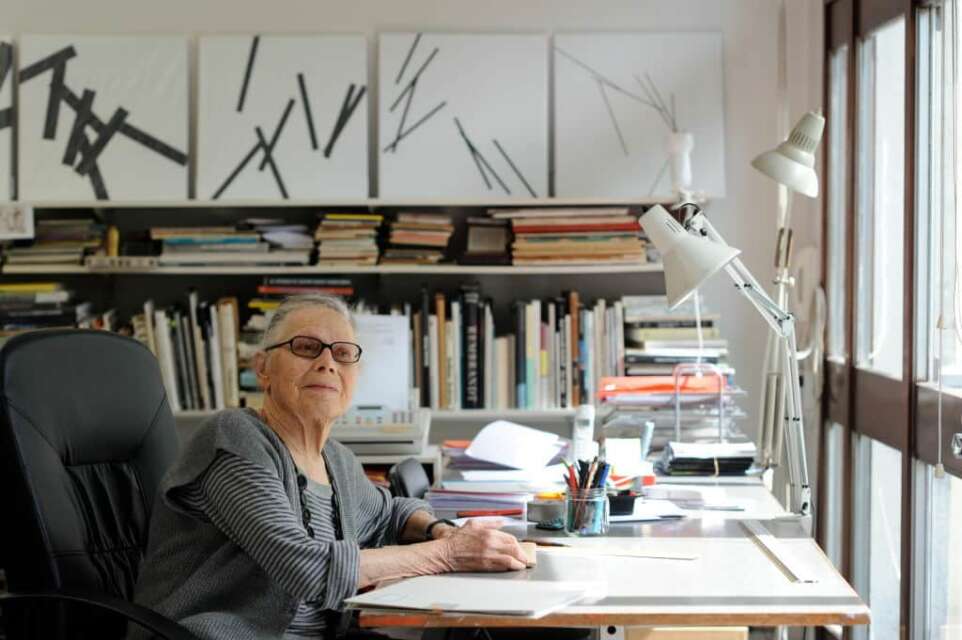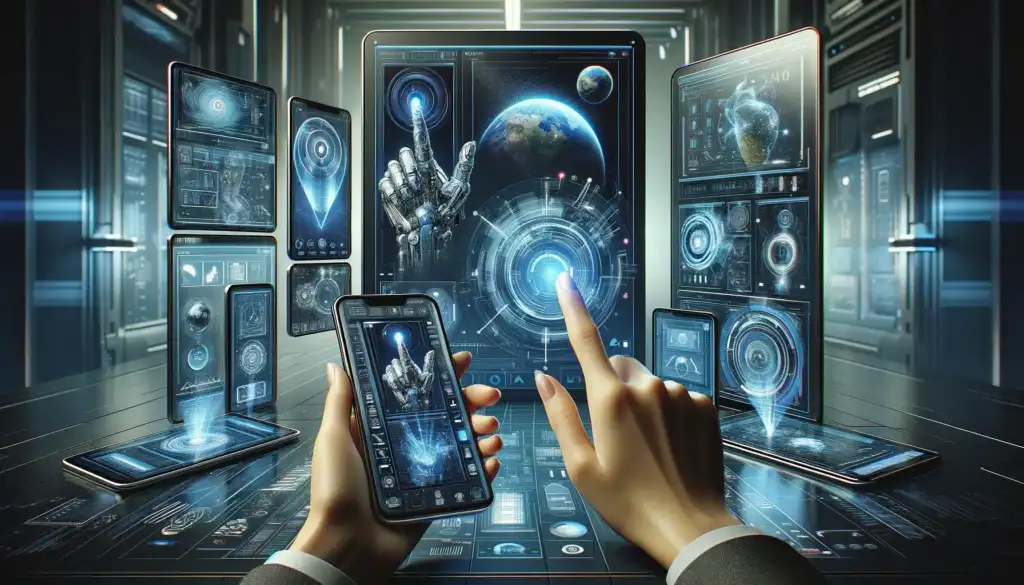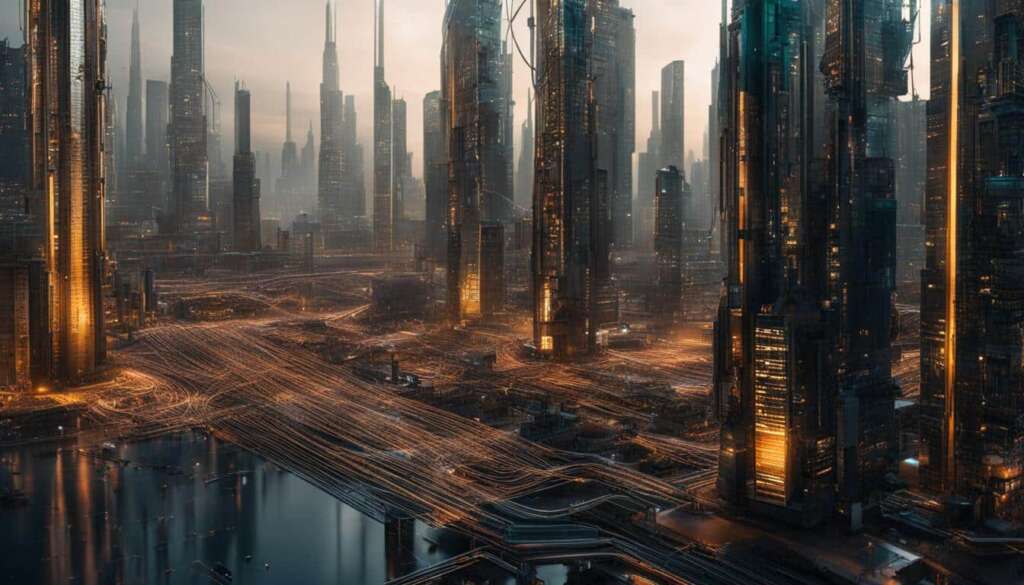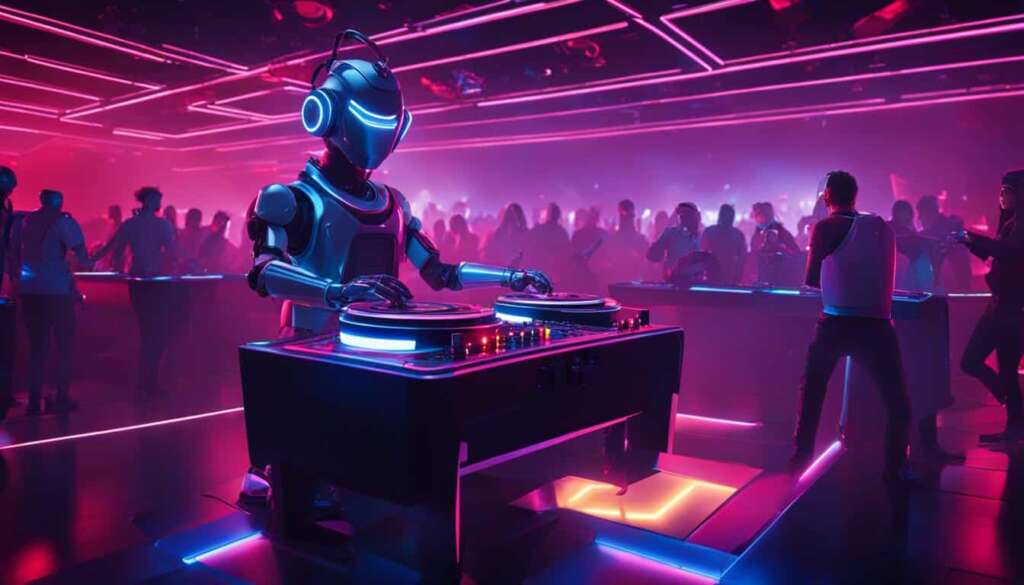Table of Contents
Vincent van Gogh’s legacy is being championed in a bold new way at the Musée d’Orsay in Paris. Through the use of artificial intelligence (A.I.), a lifelike doppelgänger of the Dutch artist interacts with visitors, offering insights into his own life and death. The A.I., named “Bonjour Vincent,” was created by engineers who used machine learning to analyze over 900 letters written by van Gogh in the 1800s. The immersive experience aims to provide a deeper understanding of the painter’s humanity and artistic innovation.
Sparking Museums’ New Appeal
A.I. Van Gogh’s interactive exhibitions are revolutionizing museum experiences and sparking museums’ new appeal. Through the use of digital art and immersive technologies, such as virtual reality, visitors can now engage with van Gogh’s works in unprecedented ways, creating immersive experiences that captivate and inspire. These innovative exhibits provide a fresh and exciting approach to viewing and understanding art, making museums more accessible and appealing to a wider range of visitors.
By combining the power of technology with artistic masterpieces, museums can now offer visitors a unique blend of traditional and contemporary experiences. Digital art installations allow for dynamic and interactive displays, breathing new life into the works of renowned artists like van Gogh. Visitors can explore their favorite paintings in a whole new dimension, gaining a deeper appreciation for the artist’s techniques and emotions.
Virtual reality takes immersion to the next level, transporting visitors into a mesmerizing world where they can step into van Gogh’s artistic universe. Through VR headsets, visitors can wander through iconic landscapes featured in his paintings or even become part of his masterpieces. This level of engagement and interactivity brings the art to life, creating an emotional connection between the viewer and the artwork itself.
With the integration of digital art and immersive experiences, museums are attracting a new generation of visitors who crave interactive engagement and a deeper connection with the artworks. This shift in approach is transforming museums into vibrant and dynamic spaces where visitors can not only observe but also actively participate in the artistic journey.
Visitor engagement is key to the success of museums, and these new technologies offer endless possibilities to captivate and inspire audiences. By embracing immersive experiences and digital art, museums can stay relevant and adapt to the ever-evolving interests and preferences of today’s visitors. These transformative approaches ignite excitement and curiosity, drawing in both art enthusiasts and technology enthusiasts alike.
The Power of Museum Technology
A.I. Van Gogh’s exhibitions are a testament to the transformative power of museum technology. Through the integration of artificial intelligence and interactive exhibits, museums have the ability to create immersive experiences that revolutionize the way visitors engage with art.
By harnessing the capabilities of artificial intelligence, museums can bring historical figures to life and provide visitors with a unique opportunity to interact with renowned artists like Vincent van Gogh. Through interactive exhibits, visitors can delve into the artist’s world, gaining a deeper understanding of his creative process and the emotions that inspired his iconic works.
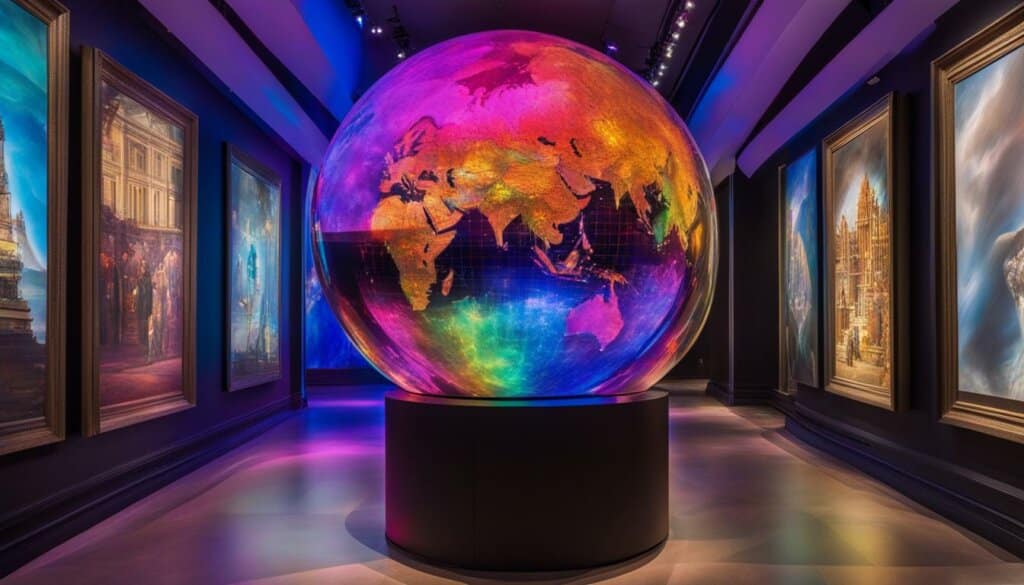
This image showcases the dynamic and cutting-edge nature of museum technology. It represents the fusion of art and innovation, capturing the essence of A.I. Van Gogh’s exhibitions.
Interactive exhibits allow visitors to actively participate in the artistic experience, promoting a sense of curiosity and engagement. Instead of merely observing artwork from a distance, visitors have the opportunity to explore, question, and immerse themselves in the stories behind each piece.
Museum technology also provides a platform for artistic innovation. By utilizing digital tools and advancements, museums can push boundaries, presenting traditional art forms in new and exciting ways. Whether through virtual reality experiences, augmented reality installations, or interactive storytelling, museum technology creates a dynamic environment that sparks creativity and fosters a deeper appreciation for art.
By seamlessly blending historical context with cutting-edge technology, museums can captivate visitors and transport them into a world of artistic wonder. The power of museum technology lies in its ability to bridge the gap between past and present, bringing art to life and inspiring a new generation of art enthusiasts.
The Future of Museums
The success of A.I. Van Gogh in revolutionizing museum experiences highlights the immense potential of virtual reality and immersive technologies in shaping the future of museums. With technology constantly advancing, museums now have the opportunity to create even more interactive and immersive exhibits that truly push the boundaries of artistic innovation.
By embracing these digital tools, museums can attract new audiences and ensure the continued relevance of their collections in a rapidly changing world. Virtual reality allows visitors to step into a world of art, offering them a truly immersive experience that goes beyond traditional galleries. The ability to explore virtual environments and interact with artworks in three dimensions not only enhances visitor engagement but also deepens their understanding and appreciation of the artistic process.
Artistic innovation thrives in this new era of museum technology. As artists and curators collaborate with technologists, a myriad of possibilities emerges. From interactive installations to augmented reality exhibits, the integration of digital elements with traditional art forms creates captivating and thought-provoking experiences. With every technological advancement, museums can captivate and inspire audiences in new and exciting ways, fostering a love for art and culture that transcends boundaries.
FAQ
What is A.I. Van Gogh?
A.I. Van Gogh is an innovative project that uses artificial intelligence (A.I.) to bring the legacy of Vincent van Gogh to life. It involves the creation of a lifelike doppelgänger of the Dutch artist that interacts with museum visitors.
How does A.I. Van Gogh work?
A.I. Van Gogh was created by engineers who used machine learning to analyze over 900 letters written by van Gogh in the 1800s. The A.I. uses this analysis to provide insights into van Gogh’s life and death, offering visitors a deeper understanding of the artist and his work.
What is the aim of the immersive experience at the Musée d’Orsay?
The immersive experience at the Musée d’Orsay aims to provide a deeper understanding of Vincent van Gogh’s humanity and artistic innovation. By using artificial intelligence and interactive exhibits, visitors can engage with van Gogh’s works in unprecedented ways.
How do interactive exhibits enhance museum experiences?
Interactive exhibits, such as those showcased by A.I. Van Gogh, provide a fresh and exciting approach to viewing and understanding art. They make museums more accessible and appealing to a wider range of visitors, allowing them to engage with artworks in new and immersive ways.
How does museum technology contribute to artistic innovation?
The use of museum technology, including artificial intelligence and interactive exhibits, opens up new possibilities for artistic innovation. By combining historical context with cutting-edge technology, museums can create dynamic and engaging environments that spark curiosity and foster a deeper appreciation for art.
What is the future of museums?
The future of museums lies in embracing virtual reality and immersive technologies. As technology continues to advance, museums have the opportunity to create even more interactive and immersive exhibits, pushing the boundaries of artistic innovation. This allows museums to attract new audiences and ensure the relevance of their collections in a rapidly changing world.

